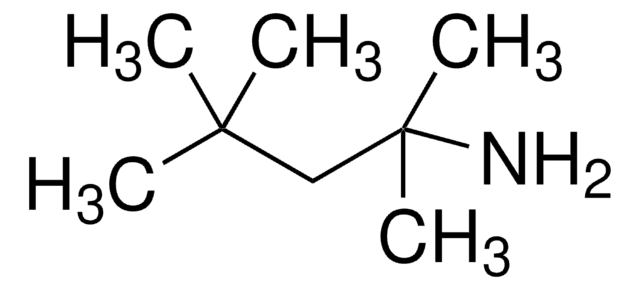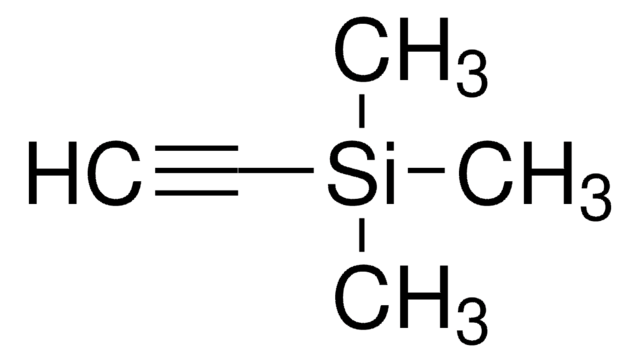391433
tert-Butylamine
≥99.5%
Synonym(s):
2-Amino-2-methylpropane
About This Item
Recommended Products
vapor density
2.5 (vs air)
vapor pressure
5.7 psi ( 20 °C)
Assay
≥99.5%
form
liquid
autoignition temp.
716 °F
expl. lim.
9.8 %
refractive index
n20/D 1.377 (lit.)
bp
46 °C (lit.)
mp
−67 °C (lit.)
solubility
water: miscible 1000 g/L at 25 °C
alcohol: miscible(lit.)
chloroform: soluble(lit.)
organic solvents: soluble(lit.)
density
0.696 g/mL at 25 °C (lit.)
SMILES string
CC(C)(C)N
InChI
1S/C4H11N/c1-4(2,3)5/h5H2,1-3H3
InChI key
YBRBMKDOPFTVDT-UHFFFAOYSA-N
Looking for similar products? Visit Product Comparison Guide
Related Categories
General description
Application
- (DAB-BA-PAA)
- (ABOL-BA-PAA)
- (DAB-Bn-PAA)
- As liquid hydrocarbon promoter in the systematic study on methane hydrate formation and dissociation.
- As an example in the study of the effect of amines in influencing atmospheric H2SO4-H2O nucleation.
- Hydroamination of terminal alkynes.
- To measure the surface acidity of solid catalysts by temperature-programmed desorption.
- As a reductive nitrogen source in the atomic layer deposition technique used to deposit TaN thin films from TaCl5 and TaBr5.
Signal Word
Danger
Hazard Statements
Precautionary Statements
Hazard Classifications
Acute Tox. 3 Inhalation - Acute Tox. 4 Oral - Aquatic Chronic 3 - Eye Dam. 1 - Flam. Liq. 2 - Skin Corr. 1A
Storage Class Code
3 - Flammable liquids
WGK
WGK 2
Flash Point(F)
-36.4 °F - closed cup
Flash Point(C)
-38 °C - closed cup
Personal Protective Equipment
Certificates of Analysis (COA)
Search for Certificates of Analysis (COA) by entering the products Lot/Batch Number. Lot and Batch Numbers can be found on a product’s label following the words ‘Lot’ or ‘Batch’.
Already Own This Product?
Find documentation for the products that you have recently purchased in the Document Library.
Our team of scientists has experience in all areas of research including Life Science, Material Science, Chemical Synthesis, Chromatography, Analytical and many others.
Contact Technical Service










